Experimental and Numerical Study of an Electrical Thermal Storage Device for Space Heating
Abstract
:1. Introduction
2. Experiment Setup
- (1)
- Charging process. During the off-peak period, the electrical heating elements are powered on to heat up the bricks. Simultaneously, due to the temperature difference between these two flow channels and the outside space, the resulting natural convection drives the air flowing upward through the channels to be heated up by the heating elements. Then, the hot air flows out from the channels and warms the space.
- (2)
- Discharging process. During the peak period at the daytime, the heating elements are powered off. Then, the hot bricks release their thermal energy to heat the continuously flowing air, which is still driven by the natural convection in the flow channel. Therefore, the space keeps warm by the hot air.
3. Numerical Approach
3.1. Governing Equations
3.1.1. Fluid Zone
3.1.2. Solid Zone
3.2. Radiation Model
3.3. Boundary Conditions
4. Results and Discussion
4.1. Model Validation
4.2. Dynamical Performance
4.3. Energy Analysis
- (1)
- An adjustable inlet or outlet of the flow channel can be designed to limit or enlarge the natural convection in the flow channel;
- (2)
- The thickness of adiabatic material should be further designed to achieve a heat loss that can provide a comfortable heat flow to the space with the natural convection in the flow channel;
- (3)
- A regulable electrical heating element can be used to offer a high heating power at the beginning of the charging process and a low heating power at the end of the charging process, which can help to decreases the maximum temperature of the bricks.
5. Conclusions
- (1)
- The numerical results agree well with the experimental results, which indicates the present numerical model can be a useful tool to simulate the dynamical performance and optimize the design of the proposed ETS device.
- (2)
- For the charging and the discharging processes, the average temperature of all the bricks and the outlet air temperature can be as high as 1002 K and 835 K. 67.3% of the total charging electrical energy is transferred to the space by the natural convection, while 20.5% is lost to the space through the adiabatic material.
- (3)
- The heat flow warming the space is quite uneven during the charging and discharging processes, which indicates the present design should be further improved to provide suitable thermal energy and make the space comfortable.
Author Contributions
Funding
Acknowledgments
Conflicts of Interest
References
- Guidance on the Promotion of Electric Power Substitution. Available online: http://www.ndrc.gov.cn/zcfb/zcfbtz/201605/t20160524_804425.html (accessed on 22 May 2018). (In Chinese)
- Guidance on the Promoting of Space Heating by Renewable Energy in Northern Areas. Available online: http://www.mohurd.gov.cn/wjfb/201709/t20170913_233287.html (accessed on 22 May 2018). (In Chinese)
- Niu, D.; Song, Z.; Xiao, X. Electric power substitution for coal in China: Status quo and swot analysis. Renew. Sustain. Energy Rev. 2017, 70, 610–622. [Google Scholar] [CrossRef]
- China makes great progress in switch from coal to power heating. Available online: http://www.sxcoal.com/news/4562751/info/en (accessed on 23 May 2018).
- Darby, S.J. Smart electric storage heating and potential for residential demand response. Energy Effic. 2017, 11, 67–77. [Google Scholar] [CrossRef]
- Carlsson-Hyslop, A. Past management of energy demand: Promotion and adoption of electric heating in britain 1945–1964. Environ. Hist. 2016, 22, 75–102. [Google Scholar] [CrossRef]
- Arteconi, A.; Hewitt, N.J.; Polonara, F. State of the art of thermal storage for demand-side management. Appl. Energy 2012, 93, 371–389. [Google Scholar] [CrossRef]
- Sarbu, I.; Sebarchievici, C. A comprehensive review of thermal energy storage. Sustainability 2018, 10, 191. [Google Scholar] [CrossRef]
- All the Electrical Thermal Storage Information You’ll Ever Need. Available online: http://www.steffes.com/electric-thermal-storage/resources/downloads/ (accessed on 26 May 2018).
- Youcef, B.B.; Alain, M.; Michel, P.; Blaise, L. Central electric thermal storage (ETS) feasibility for residential applications: Part 1. Numerical and experimental study. Inter. J. Energy Res. 2001, 25, 53–72. [Google Scholar]
- Youcef, B.B.; Blaise, L.; Michel, P.; Alain, L. Central electric thermal storage (ETS) feasibility for residential applications: Part 2. Techno-economic study. Inter. J. Energy Res. 2001, 25, 73–83. [Google Scholar]
- Molina, A.; Gabaldon, A.; Fuentes, J.A.; Gomez, E.; Alvarez, C. Electrical thermal storage modeling: A tool to evaluate new opportunities and bids for residential users in a deregulated market. In Proceedings of the 2003 IEEE Bologna Power Tech Conference Proceedings, Bologna, Italy, 23–26 June 2003. [Google Scholar]
- Molina, A.; Gabaldon, A.; Fuentes, J.A.; Alvarez, C. Implementation and assessment of physically based electrical load models: Application to direct load control residential programmes. IEE Proc. Gener. Transm. Distrib. 2003, 150, 61–66. [Google Scholar] [CrossRef]
- Ali, M.; Jokisalo, J.; Siren, K.; Lehtonen, M. Combining the demand response of direct electric space heating and partial thermal storage using LP optimization. Electr. Power Syst. Res. 2014, 106, 160–167. [Google Scholar] [CrossRef]
- Sauter, P.S.; Solanki, B.V.; Canizares, C.A.; Bhattacharya, K.; Hohmann, S. Electric thermal storage system impact on northern communities’ microgrids. IEEE Trans. Smart Grid 2017, 99, 1–12. [Google Scholar] [CrossRef]
- Dolado, P.; Lazaro, A.; Marin, J.M.; Zalba, B. Characterization of melting and solidification in a real scale pcm-air heat exchanger: Numerical model and experimental validation. Energy Convers. Manag. 2011, 52, 1890–1907. [Google Scholar] [CrossRef]
- Stathopoulos, N.; El Mankibi, M.; Issoglio, R.; Michel, P.; Haghighat, F. Air-PCM heat exchanger for peak load management: Experimental and simulation. Sol. Energy 2016, 132, 453–466. [Google Scholar] [CrossRef]
- Chuan, L.; Yanyang, S.; Guanghui, L.; Yong, X.; Yufeng, D.; Likui, W.; Yulong, D. Charging behavior of an electrical storage heater using a high temperature composite phase change material. Energy Storage Sci. Technol. 2017, 6, 739–747. [Google Scholar]
- Amir, F.; Yuwen, Z.; John, H. Advanced Heat and Mass Transfer; Global Digital Press: Columbia, MO, USA, 2010. [Google Scholar]
- Ansys Inc. Ansys Fluent Theory Guide; Ansys Inc.: Canonsburg, PA, USA, 2015. [Google Scholar]
- Chen, H.; Liu, N.; Chow, W. Wind effects on smoke motion and temperature of ventilation-controlled fire in a two-vent compartment. Build. Environ. 2009, 44, 2521–2526. [Google Scholar] [CrossRef]
- Peppes, A.A.; Santamouris, M.; Asimakopoulos, D.N. Buoyancy-driven flow through a stairwell. Build. Environ. 2001, 36, 167–180. [Google Scholar] [CrossRef]
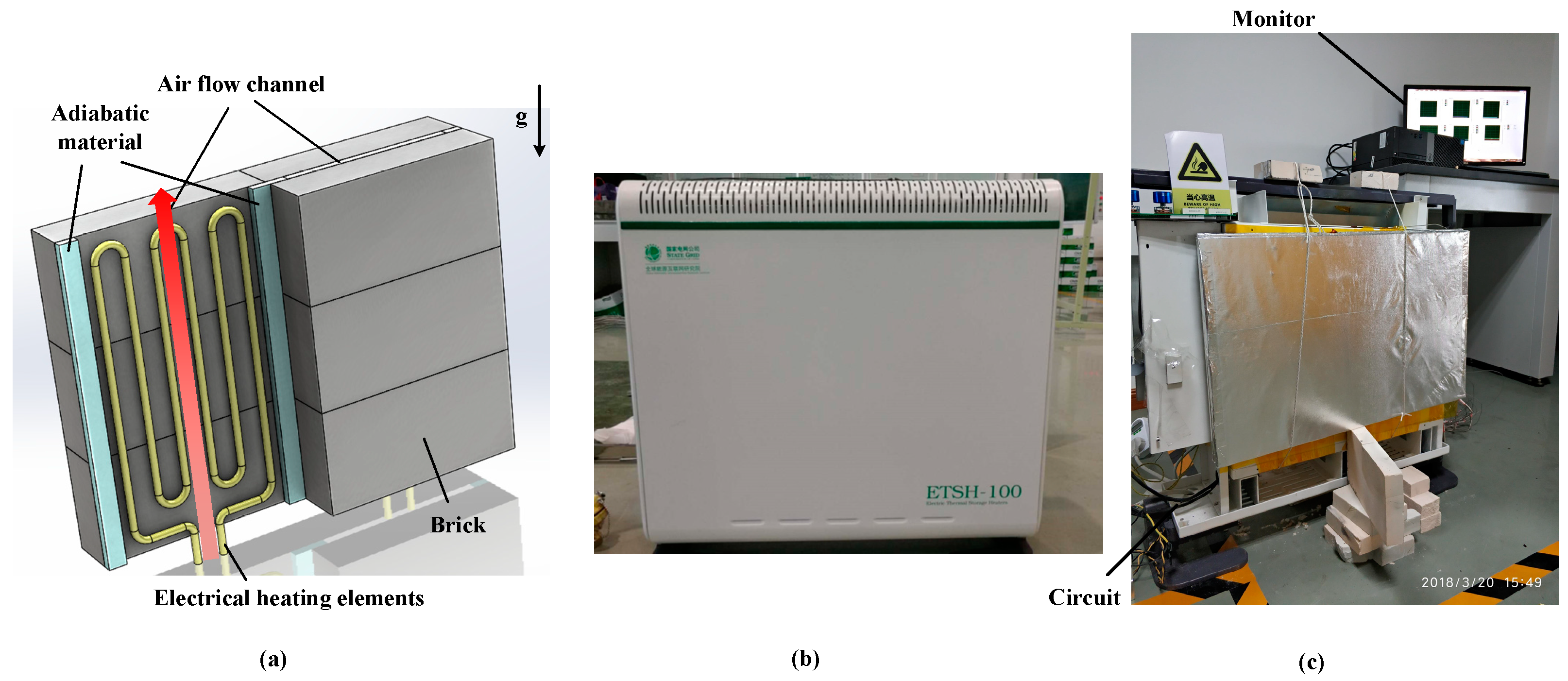





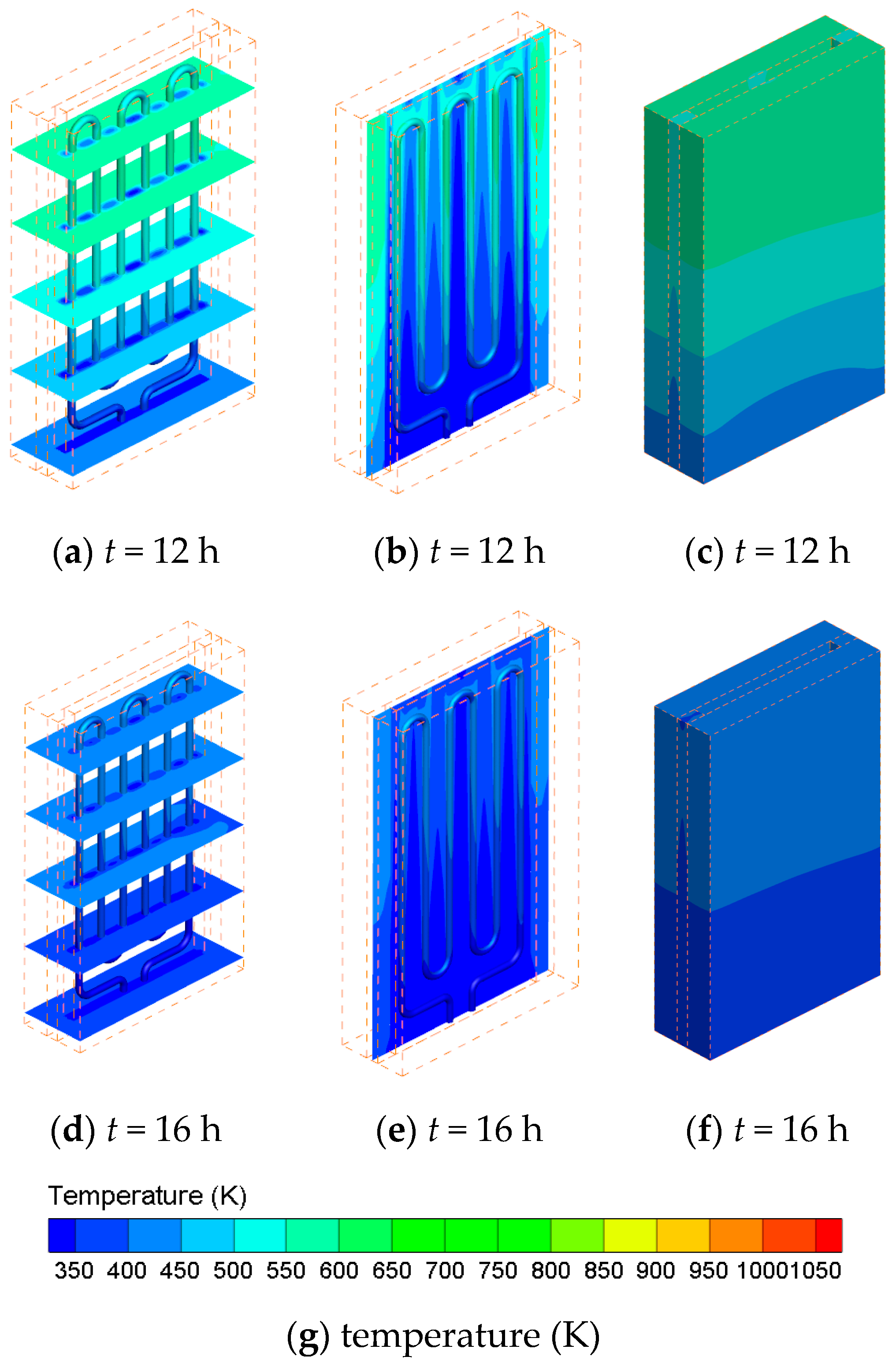

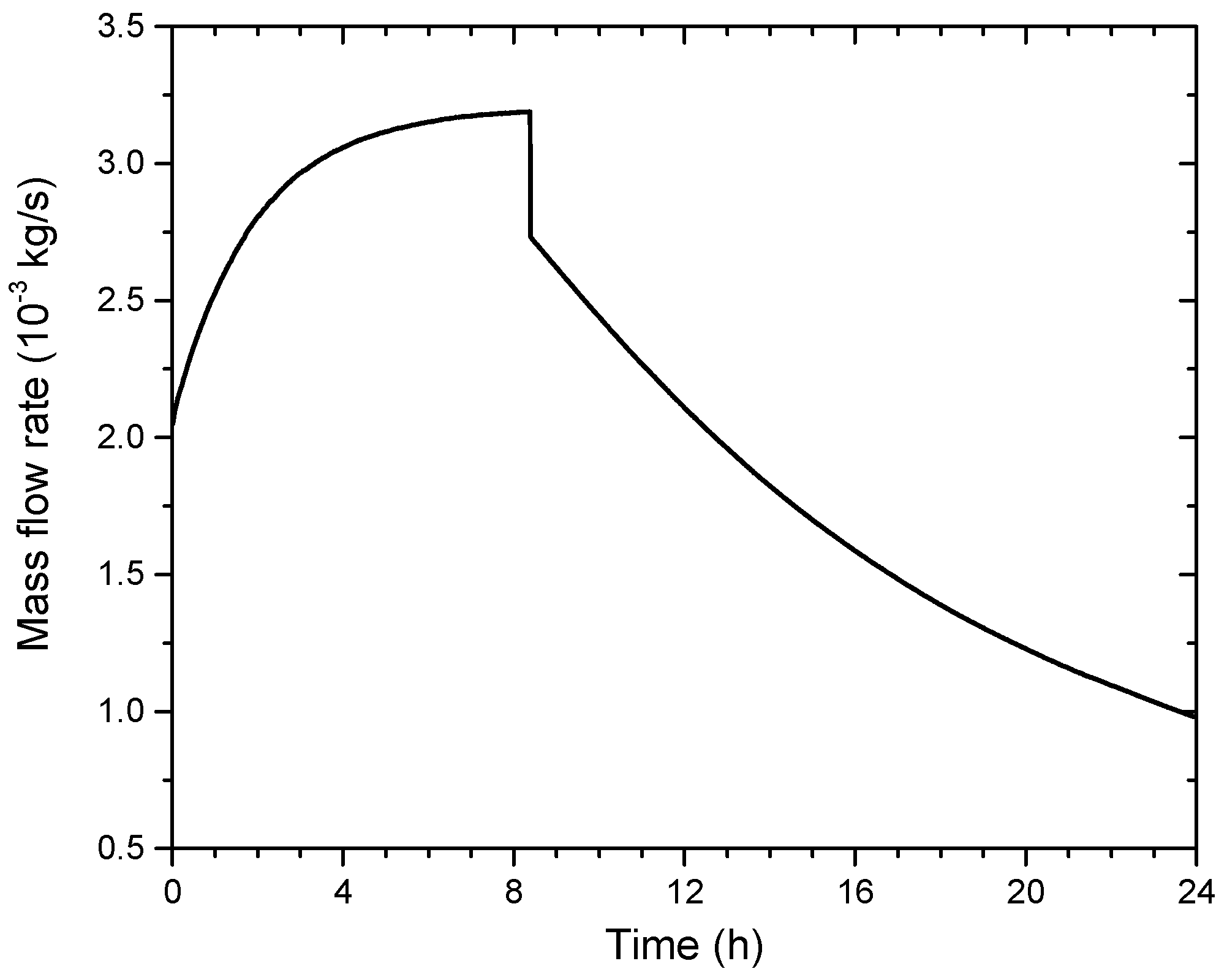
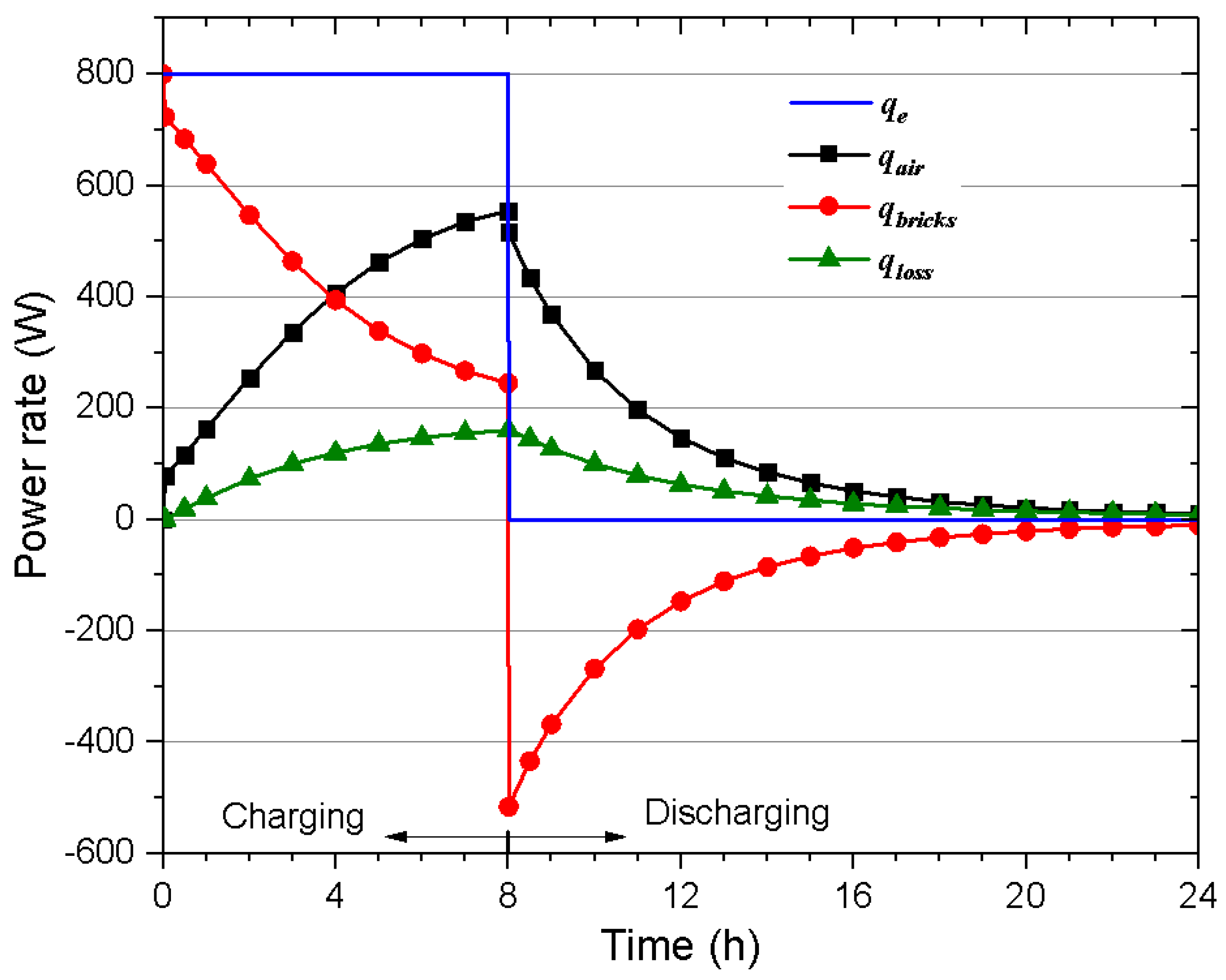
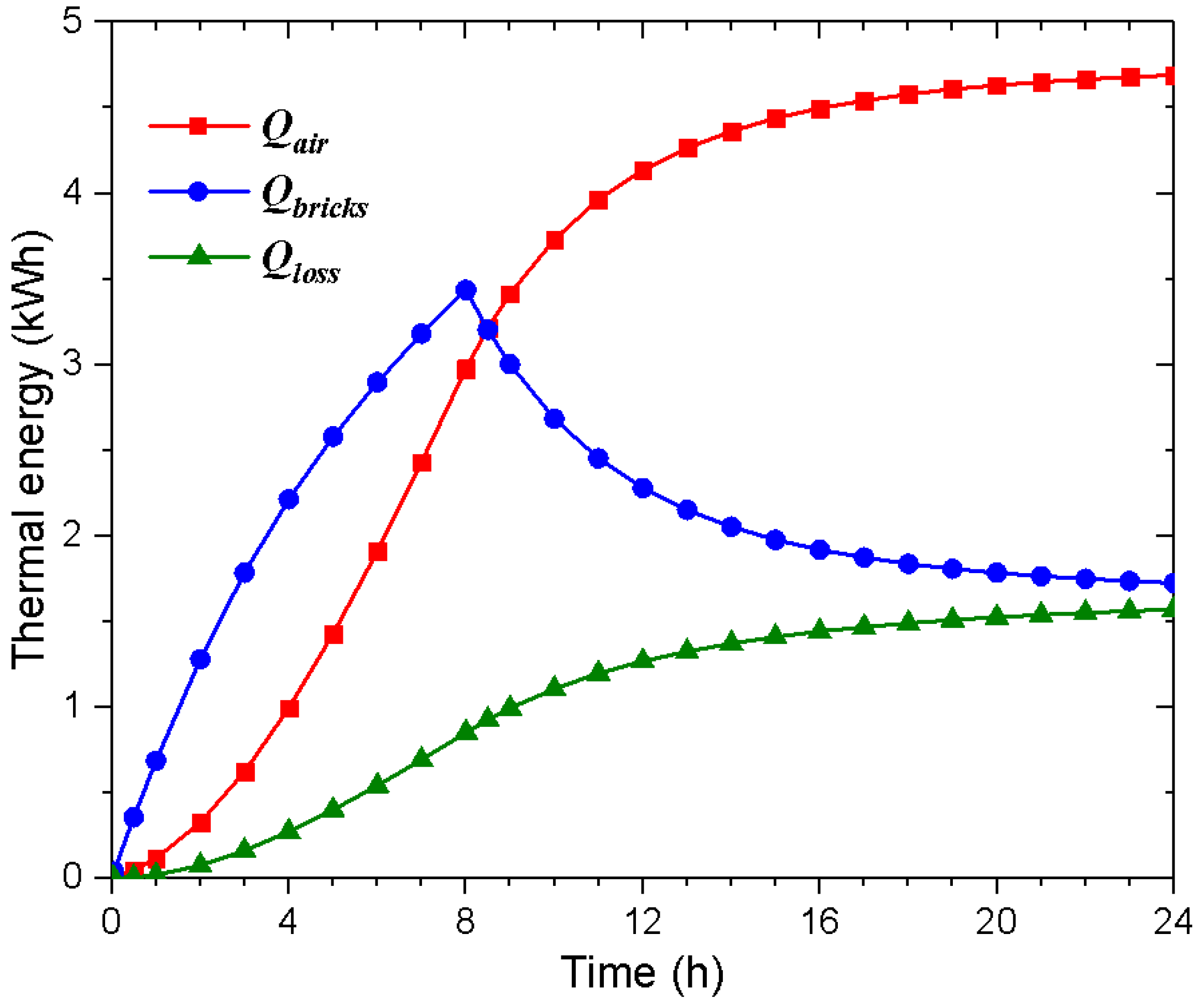
| Property | Value |
|---|---|
| Density, ρ (kg m−3) | 2150 |
| Heat capacity, cp (J kg−1 K−1) | 1240 |
| Thermal conductivity, k (W m−1 K−1) | 1.3 |
| Phase change temperature, Tm (K) | 986 |
| Latent heat, hl (kJ kg−1) | 63.5 |
© 2018 by the authors. Licensee MDPI, Basel, Switzerland. This article is an open access article distributed under the terms and conditions of the Creative Commons Attribution (CC BY) license (http://creativecommons.org/licenses/by/4.0/).
Share and Cite
Xu, G.; Hu, X.; Liao, Z.; Xu, C.; Yang, C.; Deng, Z. Experimental and Numerical Study of an Electrical Thermal Storage Device for Space Heating. Energies 2018, 11, 2180. https://doi.org/10.3390/en11092180
Xu G, Hu X, Liao Z, Xu C, Yang C, Deng Z. Experimental and Numerical Study of an Electrical Thermal Storage Device for Space Heating. Energies. 2018; 11(9):2180. https://doi.org/10.3390/en11092180
Chicago/Turabian StyleXu, Guizhi, Xiao Hu, Zhirong Liao, Chao Xu, Cenyu Yang, and Zhanfeng Deng. 2018. "Experimental and Numerical Study of an Electrical Thermal Storage Device for Space Heating" Energies 11, no. 9: 2180. https://doi.org/10.3390/en11092180






